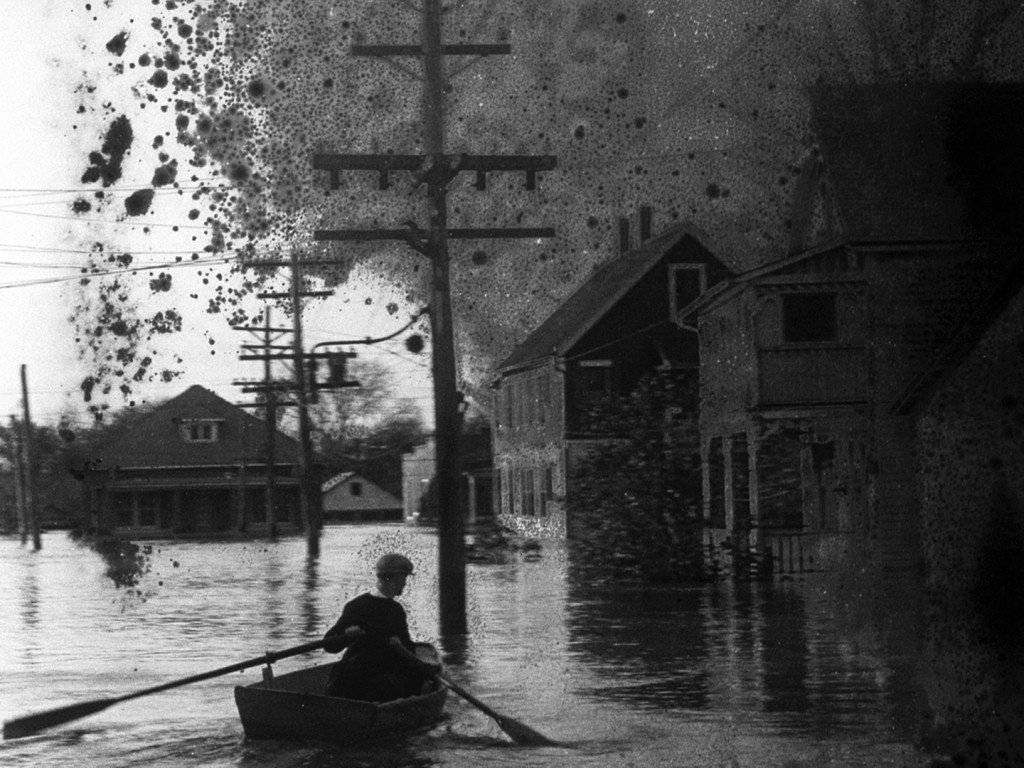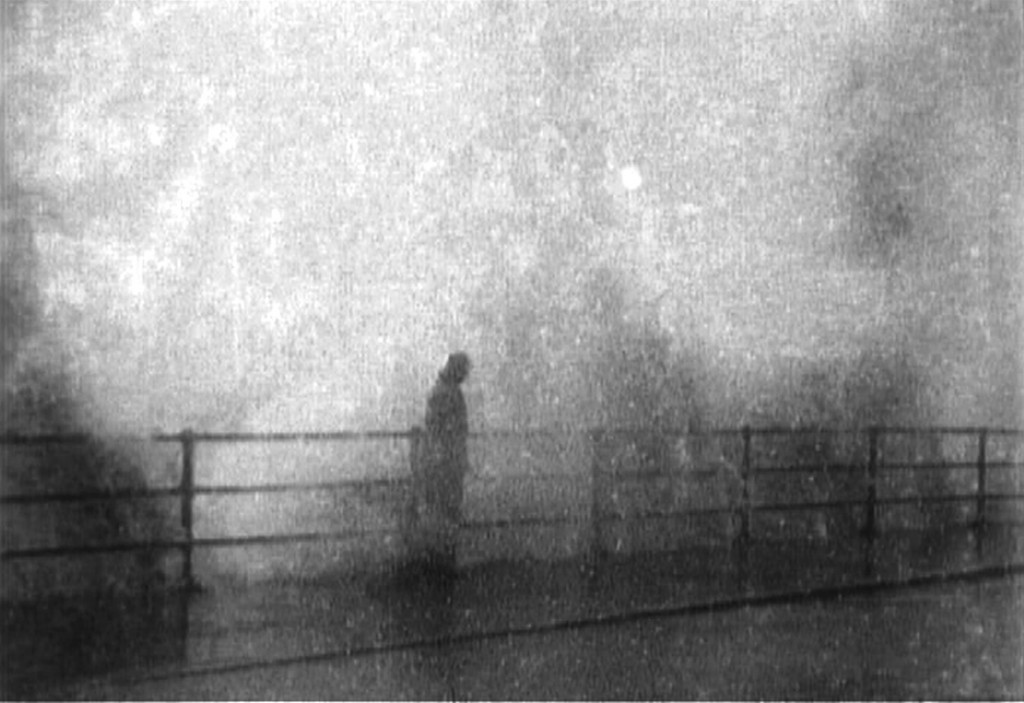
Still from The Great Flood. 2013. USA. Directed by Bill Morrison. Courtesy of Bill Morrison.
In Bill Morrison’s work, which utilizes decaying archival film stock to create contemporary digital narratives, the supernatural works on two levels. First, it emerges in the resuscitation of events and people on the verge of falling into the abyss of forgotten history. For example, in his feature-length film The Great Flood (2012), Morrison digitally sutured newsreel footage of the Mississippi River flood of 1927, the most destructive in American history, to retell the story of Southern sharecroppers who embarked on a mass exodus from their homes to the drier Northern cities. Second, the supernatural seems to be revealed in the fragile nature of the 35mm film’s nitrate composition, which flickers, cracks, and burns when projected, transforming indexical traces of figures into abstract patterns. By utilizing damaged film, Morrison provides it the opportunity to survive in spite of its inevitable decline—much like a ghost fighting to remain in the physical world before it is cast into an unknown netherworld.
Morrison’s mid-career film retrospective, “Compositions,” concluded at the Museum of Modern Art (MoMA), New York, in November 2014. But the related exhibition, “Re-Compositions,” which features six thematic programs rotated monthly, is viewable in a first-floor gallery of the museum through March 31, 2015. The looped programs offer a glimpse at the breadth of Morrison’s oeuvre, which includes thirty projects created over the past twenty years. Composed of newsreels and silent films, Morrison’s work is almost always accompanied by contemporary soundtracks made in tandem with acclaimed composers such as Laurie Anderson, Todd Reynolds, Bill Frisell, Philip Glass, and Michael Gordon. Their accompaniment adds drama and emotional nuance to the footage, which otherwise would be unmoored in purely visual language—much as live musical accompaniment in the early twentieth century guided viewers’ reactions to silent films.

Still from The Highwater Trilogy. 2006. USA. Directed by Bill Morrison. Courtesy of Bill Morrison.
In The Highwater Trilogy (2006), Morrison combines archival newsreel footage with music by David Lang and Michael Gordon to foment feelings of anxiety about environmental and meteorological disasters in the modern era. Part 1, “Before I Enter,” includes 1920s footage of flooded cities in New Jersey, Alabama, France, England, and Italy. Portending future doom, Part 2, “How to Pray,” shows footage from 1925 of icebergs floating in the northern Atlantic off Newfoundland and Nova Scotia: they flicker and disappear through visual static or snow, as if they are trying to transmit images of themselves from the past using a bad radio connection. Part 3, “What We Build,” opens with aerial footage of another flooded city whose rooftops are all but submerged under muddy waters. The devastating imagery is haunted by Lang’s soundtrack. Marked by moaning strings and an insistent, inexorable drumbeat, this section evokes panic, despite the shots of women sweeping water from their doorsteps, smiling as if they recognize the person behind the camera. These apparitions seem to say to the viewer: “This is where you are headed.”
In opposition to the despair—and apocalyptic warnings—in The Highwater Triology, the work Just Ancient Loops (2012) has a detached tone. Mashing together different views and concepts of the heavens—archival black-and-white footage taken from a telescope on Earth and newly created color, computer-generated images taken from space scans—at twenty-four frames per second, the film offers “The God’s Eye View,” the title of its program at MoMA. The film presents first the perspective of people watching a solar eclipse in the 1920s, and later, the impassive perspective of a computer cobbling together high-resolution imagery taken by a satellite in space. In both sections, a sense of what could never be known—that is, what space looks like beyond what the human eye can perceive—is increasingly known, imbuing humans with a sense of godly omnipotence. What the film ultimately highlights, however, is that humans are always only at the boundaries of understanding: past discoveries are eclipsed by new ones, rendering groundbreaking footage from the 1920s into ossified, sometimes humorous relics. What we do not know—the nature of our own galaxy, not to mention others in the universe—is infinite. The infinite exists in the realm of the supernatural, one where even the existence of God cannot be disproven.
In March 2015, Morrison will present his film Beyond Zero: 1914–1918, a work that combines footage from World War I with music composed by Aleksandra Vrebalov and performed by the Kronos Quartet. Screening locations include Carnegie Hall in New York City, the EKU Center for the Arts in Richmond, Kentucky, and the Lieu Unique Nantes in France.



